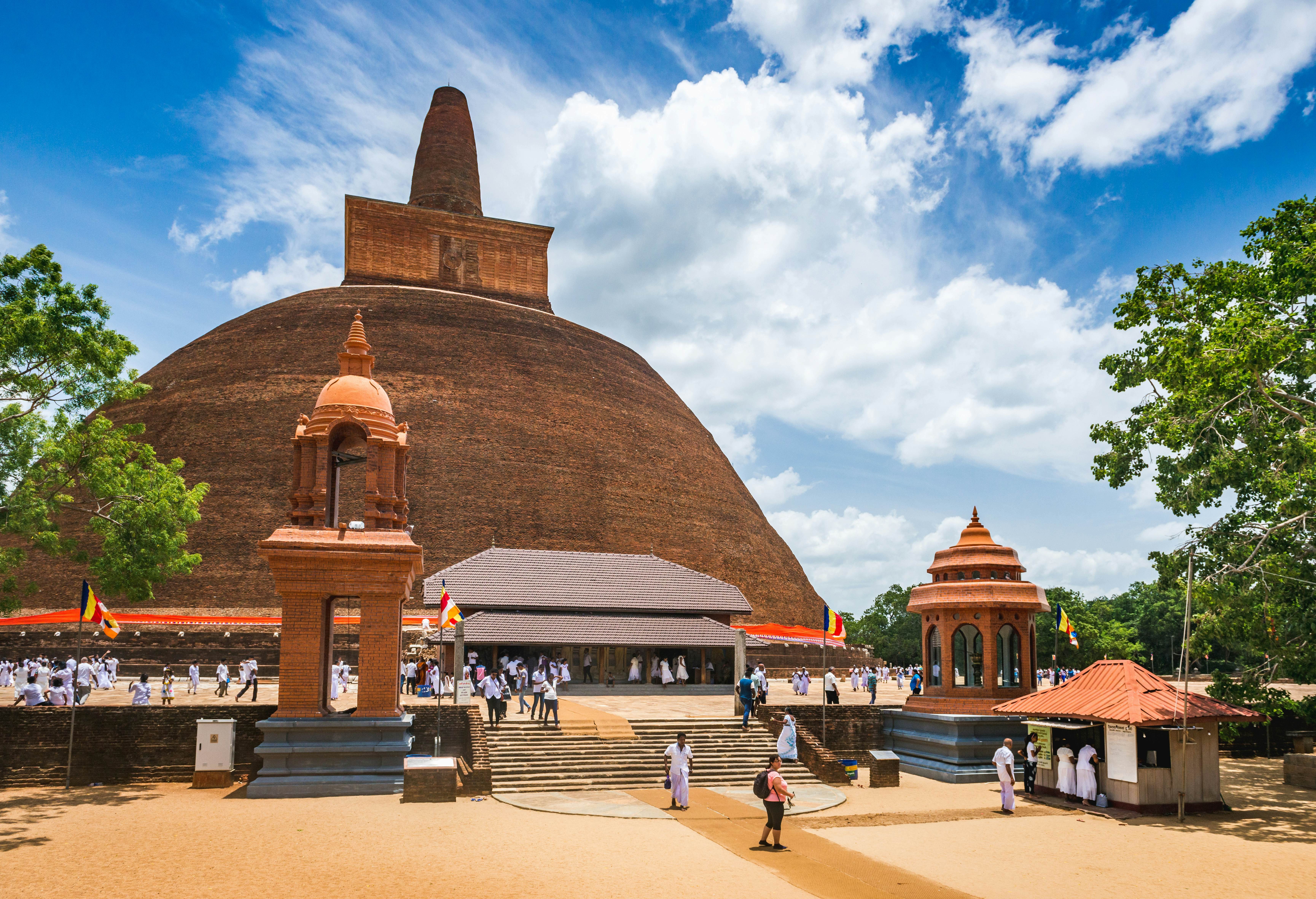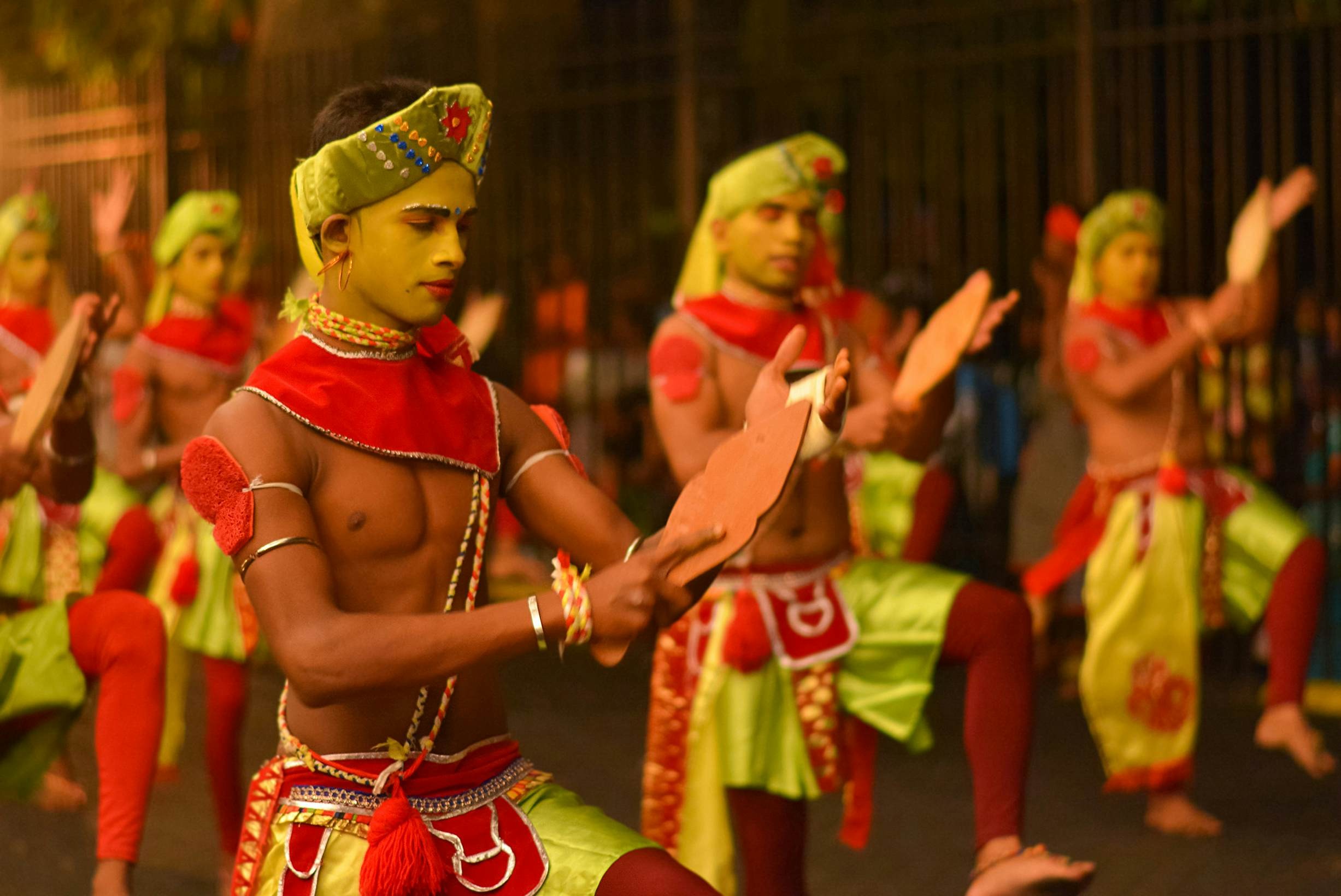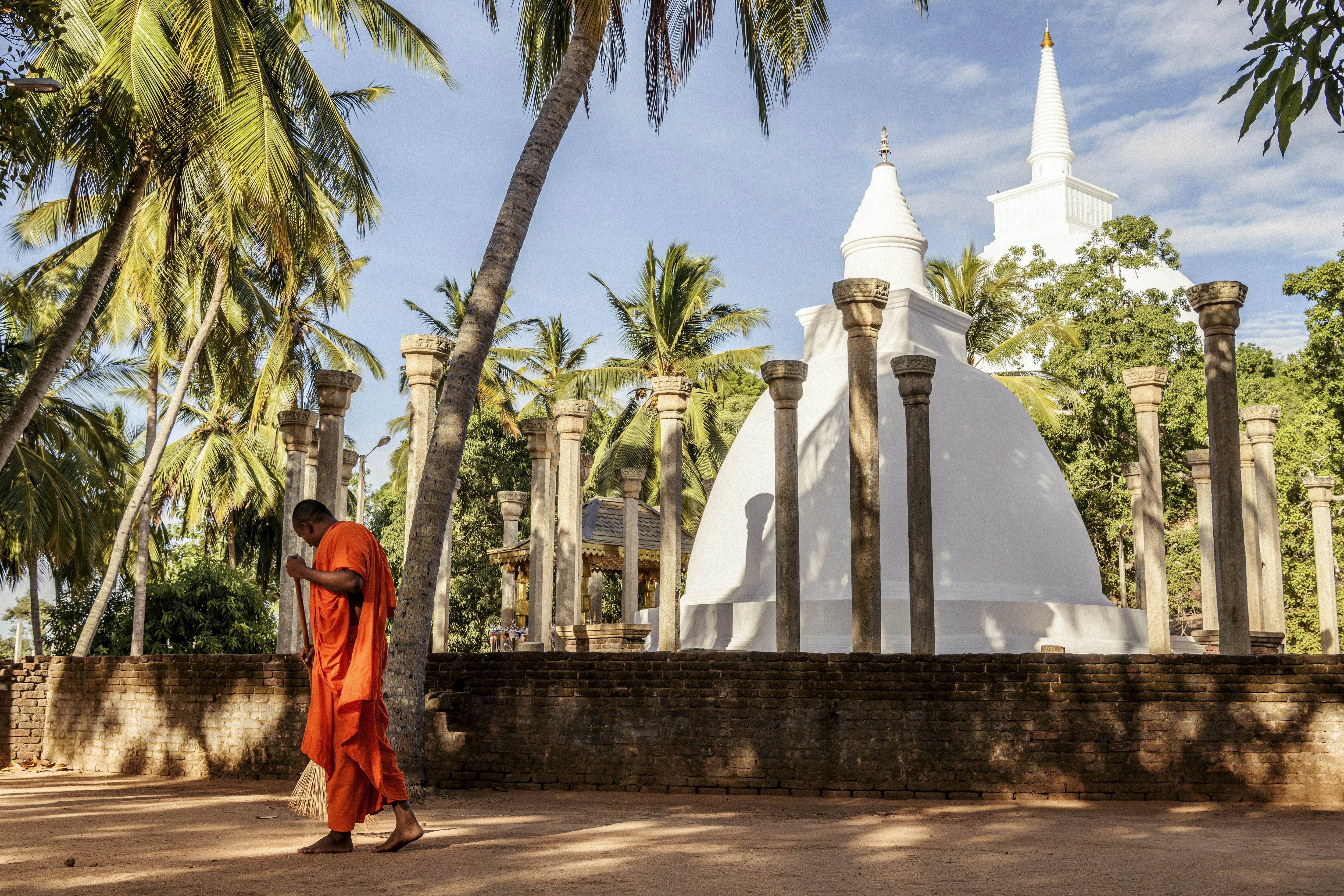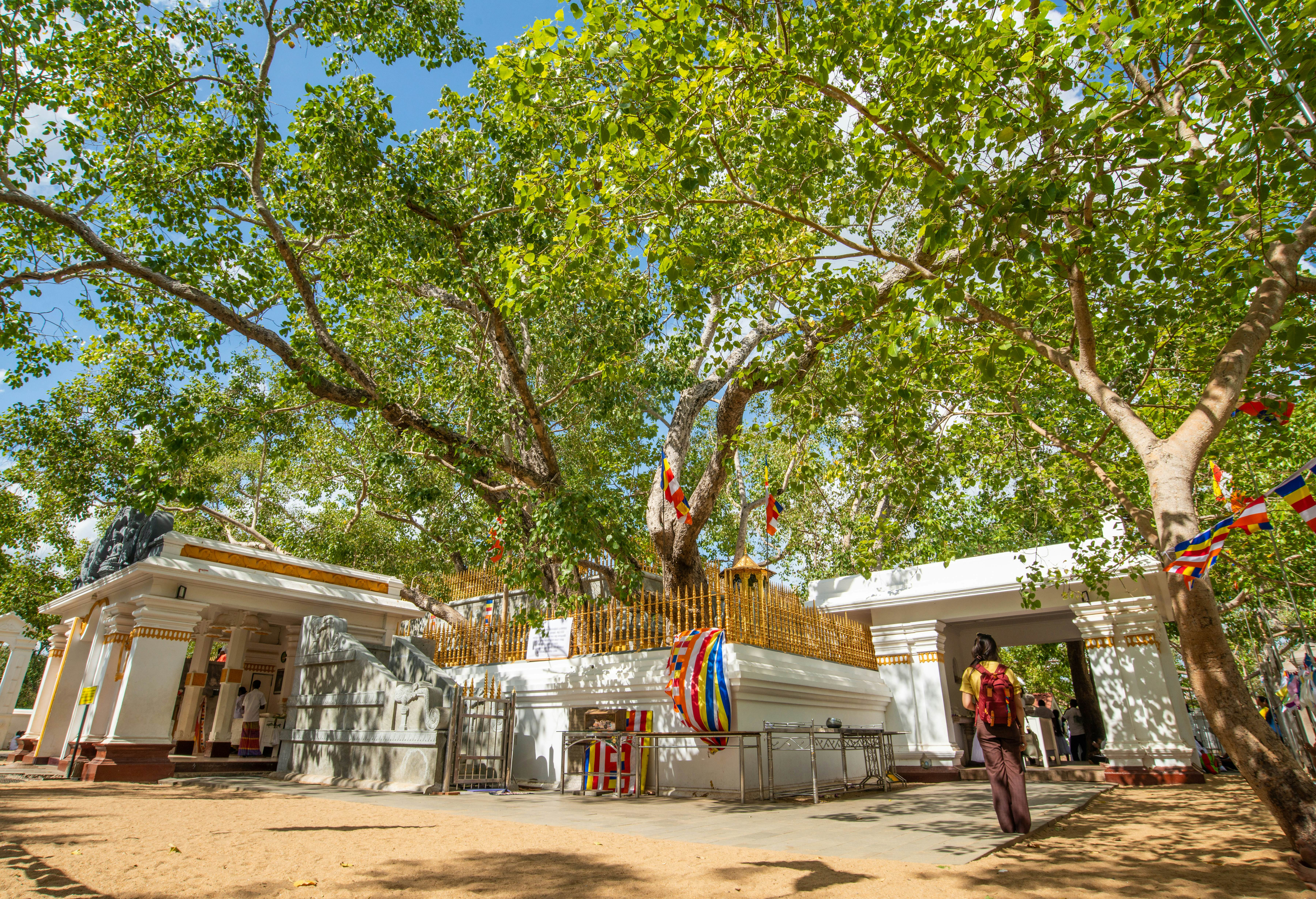Planning a trip to Sri Lanka? Determining the Best Time To Travel To Sri Lanka depends on your priorities, whether it’s hitting the beaches, exploring the country, or avoiding crowds. SIXT.VN offers expert travel consulting and convenient services to make your Sri Lankan adventure seamless. With SIXT.VN, you can enjoy every moment of your visit, with reliable support for planning your trip, arranging transportation, and enjoying various tourist attractions.
1. When Is The Best Time For Beach Holidays In Sri Lanka?
The best time for beach holidays in Sri Lanka is from December to March. During these months, the south and west coasts experience the driest weather, making popular beach resorts like Hikkaduwa and Mirissa ideal destinations with excellent surfing conditions. However, this period also coincides with the peak tourist season, so expect larger crowds.
1.1 What Are The Beach Destinations During December To March?
During December to March, the prime beach destinations in Sri Lanka are primarily along the south and west coasts. These regions experience the driest and most pleasant weather, making them perfect for beach vacations. Popular spots include:
- Hikkaduwa: Renowned for its beautiful beaches, coral reefs, and vibrant nightlife.
- Mirissa: Known for its tranquil beaches, whale watching tours, and laid-back atmosphere.
- Unawatuna: Offers a picturesque bay, calm waters ideal for swimming, and a range of beachfront restaurants.
- Bentota: Features golden sandy beaches, luxury resorts, and opportunities for water sports like jet skiing and windsurfing.
- Galle: While famous for its historic fort, Galle also boasts lovely beaches nearby, such as Jungle Beach and Unawatuna.
These destinations provide a mix of relaxation, adventure, and cultural experiences, ensuring a memorable beach holiday in Sri Lanka.
1.2 How Is Wildlife During December To March?
Sri Lanka is a fantastic year-round destination for wildlife enthusiasts, but the months from November to April, which include December to March, are considered the best for spotting elephants, leopards, and buffalo. During this peak tourist season, all the major national parks are open, and animals tend to gather around water sources, making them easier to observe.
1.3 How About Pilgrimage To Adam’s Peak During December To March?
The pilgrimage season to Adam’s Peak begins in December and lasts until mid-April. During this time, pilgrims of various faiths climb the sacred summit, which is a unique cultural experience.
 Pilgrims at Abhayagiri Vihāra Monastery, Anuradhapura
Pilgrims at Abhayagiri Vihāra Monastery, Anuradhapura
1.4 How Is The Christmas Season In Sri Lanka?
At the end of December, Sri Lanka gears up for Christmas, celebrated enthusiastically by the Christian community. People of other faiths also participate in secular events during the holidays, with extravagant decorations everywhere.
1.5 How About The Tourist Season Peak in January In Sri Lanka?
January marks the peak of the tourist season in Sri Lanka. While the crowds are at their largest and prices at their highest, the favorable weather in the south and west makes it an appealing time for a beach holiday. Many popular towns also host major festivals during this month.
1.6 What Festivals Can I See in January In Sri Lanka?
In January, you can enjoy festivals like the Duruthu Perahera in Colombo, a grand celebration with lights, dances, and parades honoring the Buddha’s first visit to Sri Lanka. Also, Galle hosts its annual literary festival, which takes place in the city’s historic fort.
1.7 How Is The Weather in February?
Visitor numbers remain high in February, with many Europeans enjoying the warm weather on the beaches. This month includes Independence Day, commemorated with festivals, parades, fireworks, and sporting events nationwide.
1.8 When is Maha Shivaratri celebrated?
The festival of Maha Shivaratri, usually in early March or late February, involves Hindus commemorating the marriage of Shiva to Parvati with all-night vigils and ceremonies. This is particularly significant for Shaivite Tamils, who make up the majority of Sri Lanka’s Hindus.
1.9 How About Ramadan Celebrations?
The Muslim festival of Ramadan shifts by 11 days each year according to the Gregorian calendar. In 2024 and 2025, the fasting month begins in March and February, respectively, with some Muslim-owned businesses closing during daylight hours.
2. When Is The Best Time To Explore The Whole Country?
The best times to explore the whole country are during the shoulder seasons of September to October and April. These months offer agreeable weather across Sri Lanka, fewer crowds, and lower prices. However, be aware that April coincides with the Sinhala and Tamil New Year, which may cause transportation issues.
2.1 How About Trekking?
April and September to October are ideal for trekking in the Hill Country or climbing Sigiriya, as the weather is generally dry but not as hot as in the summer.
2.2 When Can You See The Gathering Of Elephants At Minneriya National Park?
From August to September, you can witness the annual Gathering of hundreds of elephants in Minneriya National Park, one of Asia’s greatest wildlife spectacles, offering a good chance to see baby elephants.
2.3 How Is The Weather In October?
October can be unpredictable, with the Yala monsoon fading and conditions shifting towards the Maha monsoon. Thunderstorms may occur in the afternoons, and rain is common, but there is still good surfing on the east coast.
2.4 How About Christian Celebrations In April?
Although Christians make up only a small percentage of Sri Lanka’s population, Christian festivals like Easter, which usually falls in April, are celebrated enthusiastically.
2.5 What Is Avurudu?
A significant event in April is Avurudu, the Sinhalese and Tamil New Year. New Year’s Eve and New Year’s Day are official holidays, and transportation can be crowded as people travel from cities to their home villages.
 Dancers Performing at Esala Perahera Festival
Dancers Performing at Esala Perahera Festival
3. When Is The Best Time To Avoid Crowds In Sri Lanka?
The best time to avoid the crowds in Sri Lanka is from May to August. This period marks the low season, with the Yala monsoon affecting the west and south coasts and the Hill Country. As a result, accommodation prices are generally lower, and tourist numbers are fewer.
3.1 What Are The Travel Destinations To Avoid Crowds?
During May to August, consider traveling to Jaffna in the North and the relaxed resorts along the East Coast, such as Arugam Bay, known for its surfing spots.
3.2 What Are The Festivals During May To August?
Despite the rain, several festivals take place during this period, including Vesak Poya, a two-day festival in May where Buddhist homes, shops, and temples are adorned with colored lights. The vibrant Esala Perahera in Kandy also occurs, featuring a procession of dancers and drummers through the town.
3.3 When Is Poson Poya?
In June, the Poson Poya is celebrated, commemorating the introduction of Buddhism to Sri Lanka. Major festivities take place in Anuradhapura, and pilgrims ascend to Mihintale’s sacred stupa.
3.4 What To Do During Summer?
For travelers not deterred by occasional rain, summer is a good time to visit Sri Lanka. The focal point for Buddhists is the Esala Perahera in July or August, particularly the Kandy Esala Perahera, with smaller parades held across Sri Lanka.
3.5 When Is Aadi Vel Celebrated?
In Colombo, the Hindu festival of Aadi Vel features a procession with the gilded chariot of Murugan through the city streets.
3.6 How About Nallur Festival?
August marks the end of the low season, with the Yala monsoon beginning to ease. Head north to Jaffna for the Nallur Festival at the Nallur Kandaswamy Kovil, featuring parades and displays of devotion.
 Monk sweeping at Mihintale Temple
Monk sweeping at Mihintale Temple
4. What Are Poya (Full Moon) Days?
Every poya (full moon) day is a holiday in Sri Lanka. Pilgrims gather at Buddhist shrines, and transportation and accommodations become crowded, particularly if the full moon falls on a Friday or Monday. Alcohol sales are restricted on poya days, but some hotels may discreetly offer alcoholic beverages. Visiting the sacred Sri Maha Bodhi tree at Anuradhapura during this time can be particularly atmospheric.
4.1 Why Are Poya Days Important?
Poya days are significant in Sri Lanka as they are public holidays tied to the full moon each month, holding deep religious importance for the country’s Buddhist community. These days are marked by increased religious observances, as many Sri Lankans, dressed in white, visit temples for worship, meditation, and to listen to sermons.
4.2 How Do Poya Days Affect Travel?
On Poya days, it’s worth noting that several aspects of daily life are affected, which can influence travel plans. For example, the sale of alcohol is typically prohibited, and many businesses, including shops and restaurants, may operate on reduced hours or remain closed altogether.
4.3 When Are Poya Days In 2024?
Here is a table of Poya Days in Sri Lanka for the remainder of 2024:
| Month | Date | Poya Name |
|---|---|---|
| July | July 21 | Esala Poya |
| August | August 19 | Nikini Poya |
| September | September 18 | Binara Poya |
| October | October 17 | Vap Poya |
| November | November 15 | Il Poya |
| December | December 15 | Unduvap Poya |
4.4 What Is The Sri Maha Bodhi Tree?
The Sri Maha Bodhi tree is a sacred fig tree in Anuradhapura, Sri Lanka, revered as one of the oldest living human-planted trees in the world. It was grown from a cutting of the Bodhi tree under which the Buddha attained enlightenment in Bodh Gaya, India. For centuries, Buddhist pilgrims have visited this site to pay homage, making it one of the most sacred places in Sri Lanka.
 Sri Maha Bodhi Tree, Anuradhapura
Sri Maha Bodhi Tree, Anuradhapura
5. What Are The Regional Weather Variations?
Sri Lanka experiences different weather patterns across its regions due to its diverse topography and the influence of monsoons. Understanding these regional variations is crucial when planning your trip to ensure you make the most of your visit, no matter the time of year.
5.1 The Southwest Region
From December to March, the southwest region enjoys the dry season, making it the ideal time to visit popular beach destinations like Bentota, Galle, and Unawatuna. Temperatures are warm, averaging around 30°C (86°F), and humidity is relatively low.
5.2 The East Coast
In contrast to the southwest, the east coast experiences its dry season from May to September. This is when areas like Trincomalee and Arugam Bay become particularly attractive, offering sunny skies, calm seas, and excellent conditions for surfing and water sports.
5.3 The Hill Country
The Hill Country, including cities like Nuwara Eliya and Kandy, enjoys a cooler climate year-round due to its higher elevation. The best time to visit is during the inter-monsoonal periods of January to March and again from June to August.
5.4 The Northern Region
The northern region, including Jaffna, experiences its dry season from May to September, similar to the east coast.
6. What Are The Key Travel Considerations?
When planning a trip to Sri Lanka, there are several key travel considerations to keep in mind to ensure a smooth and enjoyable experience. These considerations range from visa requirements to health precautions and cultural etiquette.
6.1 Visa and Entry Requirements
Before traveling to Sri Lanka, ensure that you have the necessary visa. Most tourists can obtain an Electronic Travel Authorization (ETA) online, which allows for a stay of up to 30 days.
6.2 Health and Safety
Consult your doctor about recommended vaccinations and health precautions before your trip. Common vaccinations include hepatitis A and typhoid. It’s also advisable to take precautions against mosquito bites, as dengue fever is present in Sri Lanka.
6.3 Local Transportation
Navigating Sri Lanka involves several transportation options, each with its own advantages. Trains are a scenic and affordable way to travel, particularly through the Hill Country. Buses are widely available and cover most parts of the island, but they can be crowded.
6.4 Cultural Etiquette
Sri Lanka has a rich cultural heritage, and respecting local customs is essential. When visiting temples, dress modestly, covering your shoulders and knees, and remove your shoes before entering.
7. How To Plan Your Itinerary For Your Interests?
Tailoring your Sri Lankan itinerary to match your interests can significantly enhance your travel experience.
7.1 Beach Lovers
For those who love the beach, the southwest coast from December to March is a must-visit. Destinations like Bentota and Unawatuna offer stunning beaches, water sports, and vibrant nightlife.
7.2 Adventure Seekers
If you’re seeking adventure, the east coast from May to September provides excellent surfing conditions in Arugam Bay.
7.3 Nature Enthusiasts
Nature enthusiasts should consider visiting during the shoulder seasons of September to October and April to explore national parks like Yala and Udawalawe.
7.4 Cultural Explorers
Cultural explorers will find the Hill Country and the Ancient Cities fascinating year-round.
8. What Are The Accommodations Available?
Sri Lanka offers a diverse range of accommodations to suit every budget and preference, from luxury hotels to cozy guesthouses and eco-friendly lodges.
8.1 Luxury Hotels and Resorts
Luxury hotels and resorts are primarily located in popular tourist areas like Colombo, Galle, and along the southwest coast. These establishments offer world-class amenities, including swimming pools, spas, fine dining restaurants, and private beaches.
8.2 Guesthouses and Boutique Hotels
Guesthouses and boutique hotels offer a more personalized and intimate experience. These smaller establishments are often family-run and provide comfortable rooms, delicious home-cooked meals, and insights into local culture.
8.3 Eco-Lodges and Retreats
For those seeking a nature-immersive experience, eco-lodges and retreats are an excellent option.
8.4 Homestays
Homestays offer an authentic cultural experience by allowing you to stay with local families.
9. What Kind Of Food Can You Find?
Sri Lankan cuisine is a vibrant blend of flavors, influenced by its rich history and diverse cultural heritage. From spicy curries to fresh seafood, the culinary offerings are sure to tantalize your taste buds.
9.1 Rice and Curry
Rice and curry is the staple dish of Sri Lanka, featuring a variety of curries served with steamed rice.
9.2 Seafood Delights
Given its island location, Sri Lanka boasts an abundance of fresh seafood.
9.3 Street Food Adventures
Exploring Sri Lankan street food is an adventure in itself.
9.4 Sweet Treats and Desserts
No culinary journey is complete without indulging in local sweets and desserts.
10. How About Budgeting?
Budgeting for a trip to Sri Lanka depends on your travel style and preferences. On average, budget travelers can expect to spend around $30 to $50 per day, while mid-range travelers might spend between $70 and $120 per day. Luxury travelers can budget for $200 or more per day.
10.1 Accommodation Costs
Accommodation costs vary widely, with budget guesthouses starting at $10 to $20 per night, mid-range hotels ranging from $30 to $70 per night, and luxury hotels costing $150 or more per night.
10.2 Food and Dining
Food costs can be quite affordable, especially if you dine at local eateries. Street food and local restaurants offer meals for as little as $2 to $5 per dish. Mid-range restaurants may charge between $10 and $20 per meal, while dining at luxury hotels can cost $30 or more.
10.3 Transportation Expenses
Transportation expenses depend on your mode of travel. Public buses and trains are very affordable, with tickets costing just a few dollars. Tuk-tuks are convenient for short distances, but negotiate the fare beforehand. Renting a car with a driver can cost between $30 and $50 per day.
10.4 Activities and Entrance Fees
Entrance fees to historical sites, national parks, and cultural attractions can add up. Budget around $10 to $30 per attraction. Activities like safari tours, surfing lessons, and cooking classes can range from $30 to $100 per activity.
10.5 Other Expenses
Other expenses include visa fees ($35 for an ETA), travel insurance, souvenirs, and tips. It’s always a good idea to have some buffer for unexpected costs.
Planning a trip to Sri Lanka involves considering the best time to visit based on your preferences. Whether you’re looking for beach holidays, exploring the country, or avoiding crowds, understanding the seasonal variations will help you make the most of your trip. For seamless travel services, rely on SIXT.VN to handle all your travel needs, including travel consulting, airport transfers, hotel bookings, and tour arrangements.
Ready to explore Sri Lanka? Contact SIXT.VN today to plan your perfect trip!
Address: 260 Cau Giay, Hanoi, Vietnam
Hotline/Whatsapp: +84 986 244 358
Website: SIXT.VN
FAQ: Best Time To Visit Sri Lanka
1. What is the best time to visit Sri Lanka for good weather?
The best time to visit Sri Lanka for good weather is during the dry season, which varies depending on the region. For the south and west coasts, December to March is ideal, while the east coast is best visited from May to September.
2. When should I visit Sri Lanka to avoid the monsoon season?
To avoid the monsoon season, plan your trip based on the region you wish to visit. Avoid the southwest coast from May to August, and the east coast from October to January.
3. What is the best month to visit Sri Lanka?
The best months to visit Sri Lanka are February and March for the south and west coasts, and June to August for the east coast.
4. When is the peak tourist season in Sri Lanka?
The peak tourist season in Sri Lanka is from December to March, coinciding with the dry season in the south and west.
5. When is the off-season in Sri Lanka?
The off-season in Sri Lanka is from May to August, during the Yala monsoon, offering fewer crowds and lower prices.
6. What should I pack for a trip to Sri Lanka?
Pack light, breathable clothing, swimwear, sunscreen, insect repellent, and a light rain jacket. If visiting temples, pack modest clothing that covers your shoulders and knees.
7. Is Sri Lanka safe for tourists?
Yes, Sri Lanka is generally safe for tourists. However, it’s always wise to take standard safety precautions, such as safeguarding your valuables and being aware of your surroundings.
8. What are the main attractions to visit in Sri Lanka?
Main attractions include the beaches of the south and west coasts, ancient cities like Anuradhapura and Polonnaruwa, the Hill Country with tea plantations, and national parks like Yala and Udawalawe.
9. How can SIXT.VN help me plan my trip to Sri Lanka?
SIXT.VN offers expert travel consulting, airport transfers, hotel bookings, and tour arrangements to ensure a seamless and enjoyable trip to Sri Lanka.
10. What are Poya days and how do they affect my travel plans?
Poya days are full moon holidays in Sri Lanka, observed with religious significance. Alcohol sales are restricted, and some businesses may be closed. It’s wise to check the Poya day calendar when planning your trip.



